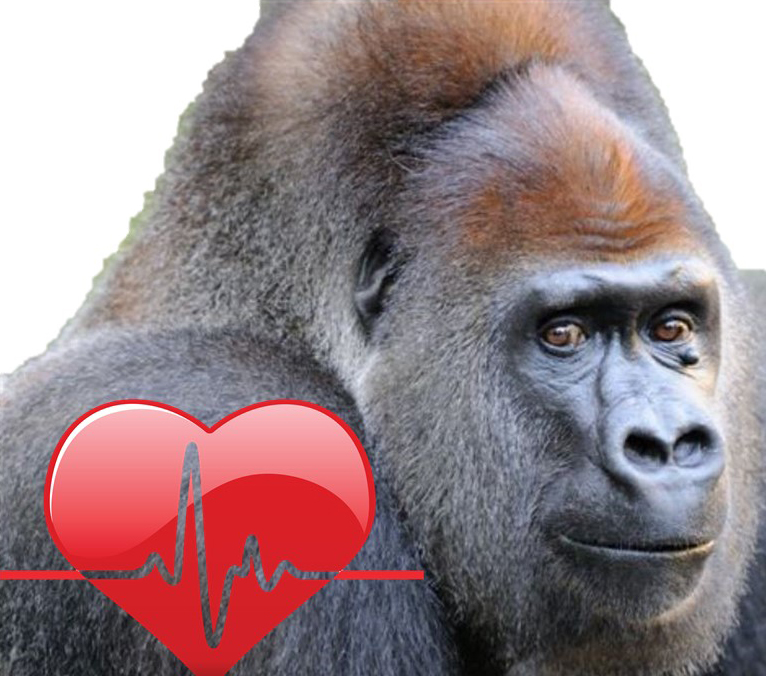We’ve known for some time that heart disease is prevalent in captive gorilla populations and is a leading cause of death. This is why, in 2010, the Great Ape Heart Project based at Zoo Atlanta () was formed. The project provides a network of clinical, pathologic and research strategies to aid in the understanding and treating of cardiac disease in all the ape species, with the ultimate goal of reducing cardiovascular-related mortalities and improving the health and welfare of great apes in human care.
“Gorilla heart disease is similar to, but different from, what we see in humans,” said Hayley Murphy, D.V.M., deputy director of Zoo Atlanta, director of the Great Ape Heart Project and co-author of a recent paper that appears in the journal . “In humans, we primarily see atherosclerosis – plaques that form in the vessels from cholesterol. In contrast, gorilla hearts get thick, which causes scarring and interferes with normal heart function.”
In the present study, veterinarians, human cardiologists and researchers joined forces to examine data gathered from zoos across the United States. They gathered information during routine health exams from 44 males and 25 females. Using echocardiograph data and serum measures that veterinarians gathered at the various institutions, the authors were able to examine not only which gorillas had heart disease, but also what factors may be related to illness.
‚ÄúOne mysterious finding is that the majority of gorillas that develop heart disease are males,‚Äù said co-author Mary Ann Raghanti, Ph.D., anthropology professor in the College of Arts and Sciences at ¬È∂π”∞‘∫. ‚ÄúWhile females do develop heart disease in some cases, the disease is less prevalent in the females, despite living just as long ‚Äì or longer ‚Äì than males.‚Äù
Lead author Patricia Dennis, D.V.M., Ph.D., veterinary epidemiologist at Cleveland Metroparks Zoo and associate professor at the Ohio State University College of Veterinary Medicine, remarked, “We are one step closer to understanding heart disease in gorillas. As we have become more aware of the health risks of obesity in ourselves, we also are managing animal nutrition to prevent obesity. Zoos are actively managing and improving diets. Research will continue as we try to understand not only what causes heart disease in male gorillas but also why females don’t seem to develop as much heart disease. Ultimately, our goal is to prevent heart disease in the next generation of gorillas in our care.”
To read the
 ‚Äã‚∂ƒã‚∂ƒã‚∂ƒã‚∂ƒã‚∂ƒã‚∂ƒã
‚Äã‚∂ƒã‚∂ƒã‚∂ƒã‚∂ƒã‚∂ƒã‚∂ƒã
